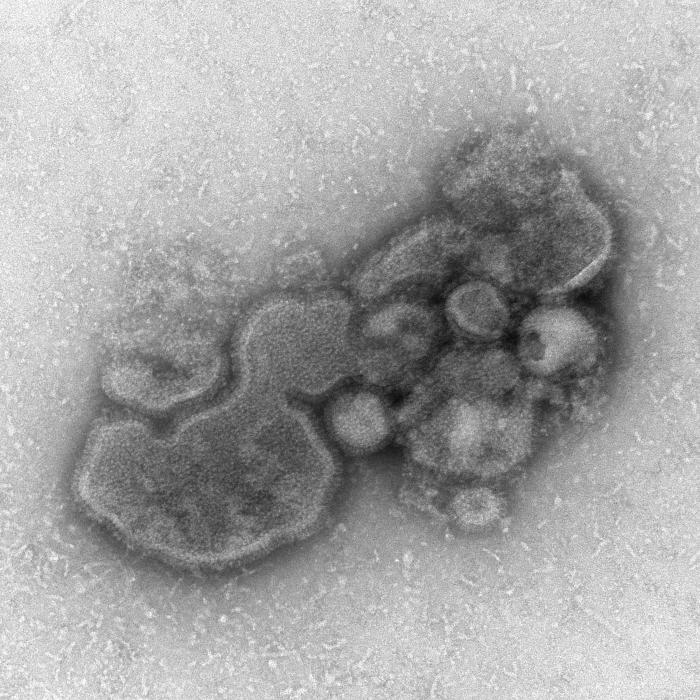Update: The Hong Kong Centre for Health Protection reported Jan. 24 the number of human H7N9 avian flu cases globally stood at 1033.
With the addition of 84 human cases of avian influenza A(H7N9) announced by the National Health and Family Planning Commission in China, the number of total human cases has topped 1,000 since first reported in 2013.

Image/Cynthia S. Goldsmith and Thomas Rowe
On Friday, Chinese officials reported 84 additional human cases, including seven deaths, from January 1 to 15.
This brings the total cases reported on Mainland China at 990 and 29 imported cases in Hong Kong (20), Taiwan (4), Canada (2), Macao (2) and Malaysia (1), based on our count.
According to Dr Margaret Chan, Director-General of the World Health Organization in an address to the Executive Board today:
Since 2013, China has reported epidemics of H7N9 infections in humans, now amounting to more than 1000 cases, of which 38.5% were fatal.
The latest epidemic, which began in late September 2016, started earlier than usual, and since December has shown a sudden and steep increase in cases. In the most recent two clusters, WHO could not rule out limited human-to-human transmission, though no sustained transmission has been detected to date.
The 60 male and 24 female patients aged from 3 to 79 had their onset from December 13, 2016 to January 13, 2017. The cases were from Jiangsu (34 cases), Zhejiang (23 cases), Anhui (14 cases), Fujian (five cases) and four cases each in Hunan and Jiangxi. Among them, 28 reported exposure to poultry or poultry markets while the source of infection of 52 cases was still under investigation.
Since November 2016, the Mainland health authorities have already recorded 215 human H7N9 cases to date.
Related:
- ‘We do not yet have a reliable or robust global system for preventing, detecting, and responding to disease outbreaks’: Researchers
- Hepatitis in the Americas: Report reveals the enormous scale of this silent epidemic
- Zambia anthrax outbreak grows to 67 cases since November
- Lassa fever case reported in Port Harcourt


One thought on “H7N9 avian influenza cases top 1000”